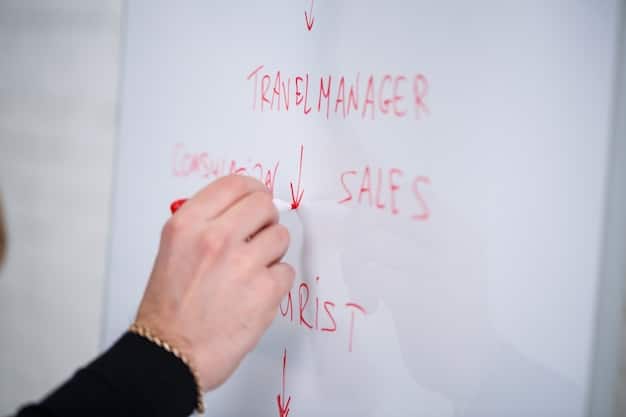Meetings That Matter: Halve Meeting Times with Agenda Strategies

Meetings That Matter focuses on how structured agendas and efficient strategies can drastically reduce meeting times, enhancing productivity and ensuring every meeting achieves its intended outcomes effectively and swiftly.
In today’s fast-paced work environment, time is a precious commodity. Meetings, while essential for collaboration and decision-making, often become time-consuming and unproductive. But what if you could transform those sprawling meetings into focused, efficient sessions? This article explores how Meetings That Matter: Cut Meeting Times in Half with These Agenda-Driven Strategies, not only saves time but also enhances meeting outcomes.
Why Agenda-Driven Meetings Matter
Meetings are a necessary evil, or so many believe. However, they don’t have to be a drain on time and resources. By implementing agenda-driven strategies, meetings can become powerful tools for progress and innovation.
An agenda provides structure, direction, and ensures that all participants are on the same page. It sets clear expectations, defines objectives, and helps manage time effectively. Without a well-defined agenda, meetings can easily stray off-topic, leading to wasted time and frustration.
The Cost of Unstructured Meetings
Unstructured meetings come at a significant cost. Time is money, and when meetings lack direction, valuable minutes turn into hours that could be spent on more productive tasks. Estimates suggest that poorly organized meetings cost companies billions of dollars annually.
Moreover, unstructured meetings often lead to disengagement among participants. When attendees feel their time is being wasted, they become less attentive and less likely to contribute meaningfully. This not only reduces the quality of the meeting but also impacts overall team morale.
- Lack of Focus: Without an agenda, discussions can veer off-topic, wasting time.
- Decreased Productivity: Unstructured meetings reduce the time available for focused work.
- Frustration and Disengagement: Participants feel their time is being wasted, leading to dissatisfaction.
- Poor Decision-Making: Important issues may be overlooked or not thoroughly discussed.
In conclusion, agenda-driven meetings transform potential time-wasters into productive, focused sessions. By setting clear objectives and sticking to a structured plan, you can ensure that every meeting contributes to achieving your goals.
Crafting Effective Meeting Agendas
Creating an effective meeting agenda is the foundation of Meetings That Matter. A well-designed agenda not only saves time but also ensures that the meeting achieves its intended outcomes. But what makes an agenda truly effective?
It starts with clarity and focus. Each agenda item should be clearly defined, with specific objectives and allocated time slots. Distribute the agenda in advance to give participants time to prepare and gather relevant information.

Essential Elements of a Meeting Agenda
An effective meeting agenda typically includes several key elements. Start with a clear statement of the meeting’s purpose and objectives. List the topics to be discussed, along with the names of the individuals responsible for leading each discussion.
Allocate specific time slots for each agenda item to maintain focus and ensure that the meeting stays on track. Include any relevant documents or preparatory materials that attendees should review before the meeting.
- Purpose and Objectives: Clearly state what the meeting aims to achieve.
- Topics and Speakers: List the subjects to be discussed and who will lead each discussion.
- Time Allocation: Assign specific time slots for each agenda item.
- Preparatory Materials: Include any documents or information attendees should review beforehand.
In summary, crafting an effective meeting agenda involves careful planning and attention to detail. By including essential elements and distributing the agenda in advance, you set the stage for a productive and focused meeting.
Strategies for Cutting Meeting Times in Half
Cutting meeting times in half may seem like a lofty goal, but it’s entirely achievable with the right strategies. The key is to streamline the meeting process, eliminate unnecessary discussions, and focus on what truly matters.
One effective strategy is to enforce strict time limits for each agenda item. Use a timer to keep discussions on track and prevent them from dragging on. Encourage participants to be concise and to-the-point in their contributions.
Techniques for Efficient Meetings
Several techniques can help you run more efficient meetings. One approach is to use a “parking lot” to address topics that are not directly related to the agenda. This allows you to acknowledge important issues without derailing the meeting.
Another technique is to encourage participants to submit questions or comments in advance. This allows you to address concerns proactively and streamline the discussion during the meeting. Finally, consider using visual aids and collaboration tools to enhance engagement and understanding.

- Time Limits: Enforce strict time limits for each agenda item.
- Parking Lot: Address non-agenda topics separately to avoid derailing the meeting.
- Advance Submissions: Encourage questions and comments to be submitted beforehand.
- Visual Aids: Use presentations and collaboration tools to enhance engagement.
In essence, by implementing these strategies, you can transform meetings from time-consuming sessions into efficient, productive discussions. The key is to be proactive, focused, and disciplined in managing the meeting process.
Embracing Technology for Streamlined Meetings
Technology plays a crucial role in streamlining meetings and making them more efficient. From virtual meeting platforms to collaborative document editing tools, there are countless ways to leverage technology to enhance the meeting experience.
Consider using cloud-based project management tools to track progress, assign tasks, and share updates in real-time. These tools eliminate the need for lengthy status update meetings and allow team members to stay informed without interrupting their workflow.
The Role of Virtual Meeting Platforms
Virtual meeting platforms like Zoom, Microsoft Teams, and Google Meet have become indispensable for modern collaboration. These platforms offer features like screen sharing, video conferencing, and chat functionality, making it easy to conduct meetings with remote participants.
Furthermore, many virtual meeting platforms offer recording capabilities, allowing you to capture meeting discussions and share them with team members who were unable to attend. This ensures that everyone stays informed and aligned, regardless of their location or availability.
- Virtual Meeting Platforms: Use tools like Zoom, Teams, and Meet for remote collaboration.
- Cloud-Based Tools: Leverage project management tools to track progress and share updates.
- Document Editing: Use collaborative document editing to streamline note-taking and action planning.
- Recording: Record meetings for later review and to keep absent team members informed.
Ultimately, embracing technology can significantly enhance efficiency, collaboration, and engagement. By using the right tools and platforms, you can ensure that meetings are not only shorter but also more productive and impactful.
The Importance of Pre-Meeting Preparation
Pre-meeting preparation is a critical component of Meetings That Matter. The more prepared participants are before the meeting, the more focused and productive the discussion will be. Insufficient preparation often leads to wasted time, irrelevant tangents, and unresolved issues.
Ensure that all participants receive the agenda and any relevant documents well in advance. Encourage them to review these materials, formulate questions, and identify key points for discussion. This sets the stage for a more informed and efficient meeting.
Steps to Effective Pre-Meeting Prep
There are several steps that attendees can take to prepare effectively for a meeting. First, review the agenda and objectives to understand the purpose of the meeting. Identify the topics that are most relevant to your role and expertise.
Next, gather any data, reports, or information that you may need to contribute to the discussion. Prepare a concise summary of your key points and any questions you have. Consider sharing these materials with the meeting facilitator in advance to help them plan the discussion.
- Agenda Review: Understand the meeting’s purpose and objectives.
- Data Collection: Gather relevant data, reports, and information.
- Key Points: Prepare a concise summary of your contributions.
- Advance Communication: Share key points with the facilitator beforehand.
By emphasizing the importance of pre-meeting preparation, you can ensure that every meeting is a productive and valuable use of everyone’s time. Encourage active participation, informed contributions, and a focus on achieving the meeting’s objectives.
Post-Meeting Actions and Follow-Up
The actions taken after a meeting are just as important as what happens during the meeting. Without proper follow-up, even the most productive meeting can fail to yield tangible results. Clear action items, assigned responsibilities, and timely follow-up are essential for ensuring accountability and progress.
Immediately after the meeting, distribute a summary of the key decisions, action items, and assigned responsibilities. Include deadlines for each action item to create a sense of urgency and accountability.
Ensuring Accountability and Progress
To ensure accountability and progress, regularly track the status of action items and follow up with individuals responsible for completing them. Use project management tools or simple spreadsheets to monitor progress and identify any roadblocks or delays.
Consider scheduling regular follow-up meetings to review progress, address any challenges, and ensure that everyone is on track. These meetings should be shorter and more focused than the initial meeting, with a clear agenda and specific objectives.
- Summary Distribution: Send a summary of decisions, action items, and responsibilities.
- Responsibility Assignment: Clearly assign roles for each action item.
- Progress Tracking: Monitor the status of action items using project management tools.
- Follow-Up Meetings: Schedule regular meetings to review progress and address challenges.
In conclusion, post-meeting actions and follow-up are crucial for translating discussions into tangible results. By distributing summaries, assigning responsibilities, tracking progress, and scheduling follow-up meetings, you can ensure that every meeting contributes to achieving your goals and driving success.
| Key Point | Brief Description |
|---|---|
| ⏱️ Agenda Clarity | Clear agenda distributed beforehand ensures a focused discussion. |
| 💻 Tech Integration | Utilize virtual platforms and cloud tools to enhance remote collaboration. |
| 📝 Pre-Meeting Prep | Participants review agenda and collect relevant data to contribute effectively. |
| ✅ Post-Meeting Action | Summarize and distribute action items promptly to ensure accountability. |
Frequently Asked Questions
▼
Meeting agendas provide structure, clarity, and focus, ensuring that discussions remain on track and objectives are met efficiently. Without an agenda, meetings can easily become disorganized and unproductive, wasting valuable time.
▼
Technology streamlines meetings through virtual platforms like Zoom or Teams, collaborative document editing, and project management tools. These resources facilitate remote participation, real-time updates, and detailed meeting records for absentees.
▼
After a meeting, it’s crucial to distribute a summary of decisions, action items, and assigned responsibilities as soon as possible. Tracking the status of each delegated task ensures accountability and sustained progress from the meeting.
▼
To guarantee preparation, distribute the agenda with all relevant documents well in advance. Encouraging participants to review materials and prepare key points ensures focused, informed contributions and saves valuable meeting time.
▼
A “parking lot” is a technique used to temporarily set aside off-topic discussions to ensure focus. By acknowledging and deferring irrelevant points, the main agenda stays streamlined, and important issues are addressed efficiently.
Conclusion
In conclusion, by adopting these agenda-driven strategies, you can transform your meetings into efficient, productive sessions that drive results. Embracing technology, emphasizing pre-meeting preparation, and ensuring effective follow-up will not only save time but also enhance collaboration and improve overall team performance. With Meetings That Matter, every meeting contributes to achieving your goals.





